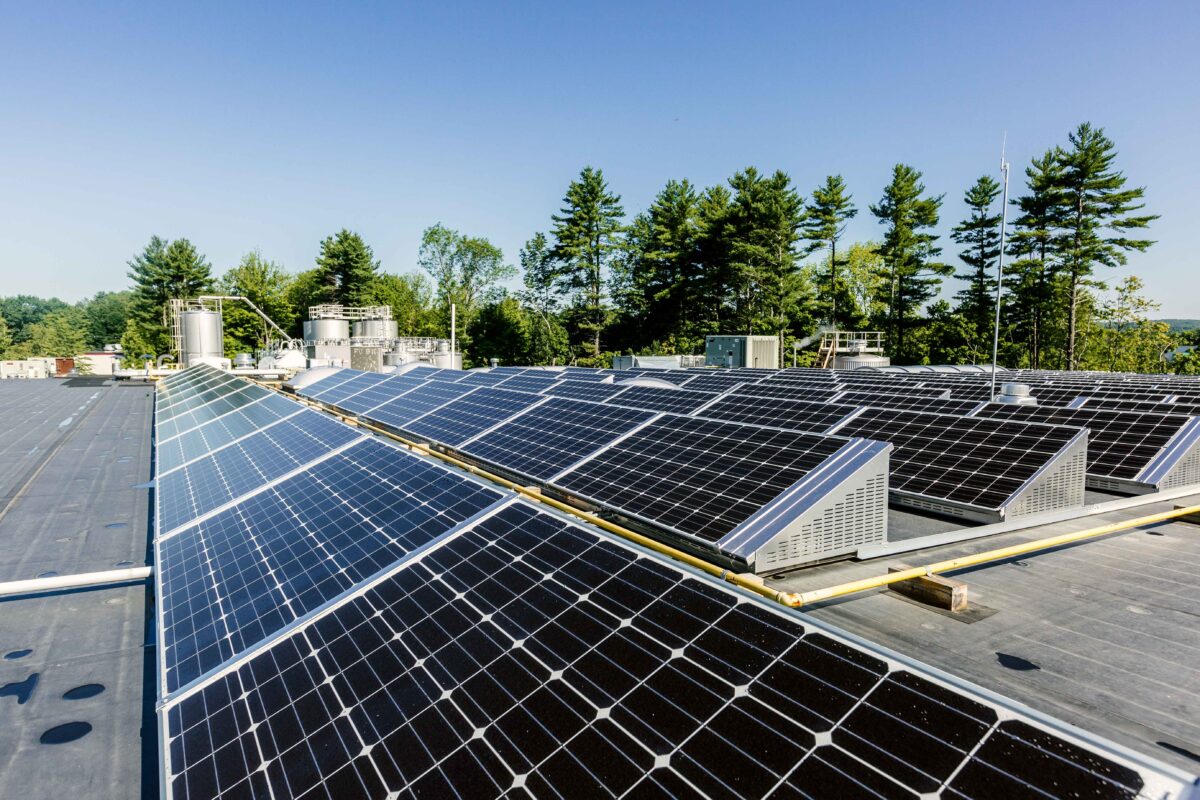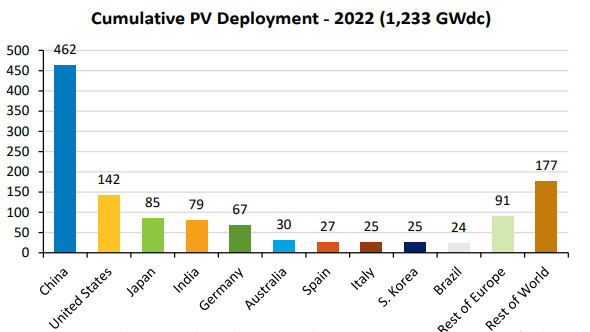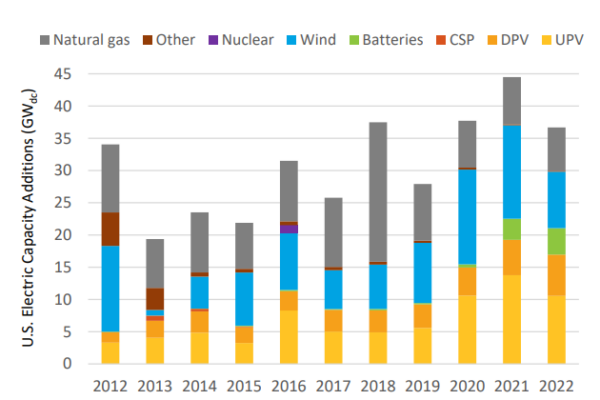|

Solar module prices hit 2-year low
The US National Renewable Energy Laboratory (NREL) has
published a new
report focusing on core benchmarks for PV prices, deployment, and imports.
May 29,
2023
By
Ryan Kennedy

Image: Allagash Brewing, Flickr
NREL says in a
new report that
there is strong global demand for PV. China remains the
frontrunner for solar deployment, growing its installations by 57%
year on year in 2022, representing 42% of global demand. Most of
China’s installations are smaller distributed projects, rather than
large, centralized utility-scale projects, said the International
Energy Agency. NREL
says analysts expect global installations to reach 300 GW this year
and 400 GW by 2025.
In the United
States, PV represented about 46% of new electricity generation
capacity additions in 2022. Yet solar has a long way to grow to play
its part as a core technology in the energy transition. PV represents
9% of net summer capacity and 4.7% of annual generation in 2022, said
NREL.
California has made the longest strides in solar, with 27.3% of its
electricity generation being sourced from solar. Solar has at least a
5% share in the generation mix in 16 states as of the end of 2022.

Image: National Renewable Energy Laboratory

Image: National Renewable Energy Laboratory
Cumulatively,
the U.S. has installed 140 GWdc of solar, representing a little over
10% of global installations. The U.S. represents about 17% of global
electricity generation. In 2022, the nation added 20.2 GWdc of solar,
said NREL, though the American Clean Power Association (ACP) places
that number at 25.5 GWdc, representing the third largest year for
solar deployment. This was a 15%
slowdown in installations from 2021,
largely due to project delays resulting from component supply issues.
Energy storage
across the U.S. added 14.1 GWh, 4.8 GW of energy storage, leading to
an average duration of about 3 hours. Batteries and other forms of
storage are being used in a variety of ways, from short-duration
peaker plants supplanting new natural gas peakers, to longer-duration
storage to match the intermittent cycle of solar generation.
Pricing
Utility-scale
PV systems in the U.S. increased in prices to $1.49 per Wac, rising
13% year-over-year. The lowest and highest reported prices in 2022
were $1.06 per Wac and $2.10 per Wac, respectively.
Residential
system prices increased as well, though slower, at about 6.3%
year-over-year, with a median
price of $2.85 per Wdc,
per EnergySage.
Prices changes
varied by project sizes. In a sample of projects from major markets
Arizona, California, Massachusetts and New York, prices changed as
follows:
-
Increased 5%
to $4.40/Wdc for systems 2.5 to 10 kW
-
Increased 9%
to $3.92/Wdc for systems 10 to 100 kW
-
Increased 4%
to $2.59/Wdc for systems 100 to 500 kW
-
Increased
13% to $2.08/Wdc for systems 500 kW to 5 MW
Global
polysilicon reached an 18-month low in January of $20 per kg,
rebounding to $30 per kg in mid-February, and then dropping to $24 per
kg by mid-April 2023.
Module prices
have fallen to a two-year low globally in April 2023, declining
steadily since fall 2022 despite strong demand. In the first two
months of 2023, average U.S. module prices were $0.36 per Wdc, down
11% quarter-over-quarter. Modules traded at a 57% premium over the
global spot price for monofacial monocrystalline silicon modules.
The solar PV
experience curve, known as Swanson’s Law, displays the relationship,
in logarithmic form, between the average selling price of a solar
module and the cumulative global shipments of modules. For every
doubling of cumulative PV shipments from 1976 to 2022, there has been
on average of a 22% reduction in module prices, said NREL.
Manufacturing
Global solar
shipments increased sharply in 2022, rising 46% over the 2021 total,
reaching 283 GW. Most of the shipments, 96%, were monocrystalline
silicon panels, up from 35% in 2015. N-Type modules are increasing in
share, representing 51%, up from about 20% in 2020 and only 5% in
2019.
“Via higher
open-circuit voltage values, you can achieve higher efficiencies and
power ratings. In and of itself, that is likely going to move
manufacturers to n-type TOPCon cell designs,
as soon as they can get there,” said Kenneth Sauer, principal
engineer, VDE Americas.
In 2022, the
U.S. produced about 5 GW of solar modules, though that number is
expected to grow significantly as the Inflation Reduction Act has
attracted strong global and domestic investment in manufacturing solar
components in the U.S. ACP said the $369 billion spending package has
already attracted $150
billion in private investments, leading to 46 new manufacturing
facilities or
significant capacity upgrades.

Image: National Renewable Energy Laboratory
While the U.S.
is betting big on domestic manufacturing, it today relies heavily on
imports. According to U.S. Census data, 28.7 GWdc of modules and 2.5
GWdc of cells were imported in 2022, a growth of 21% year over year.
Malaysia, Vietnam, Cambodia, and Thailand represented 73% of all
module imports, placing significant importance on the ongoing policy
battle over President Joe Biden’s moratorium
on solar tariff imports from
the four nations.
In 2022, only 10%, or about 2.7 GWdc, of modules
reported a tariff, compared to 56% (13.2 GWdc) in 2021, said NREL.
Green Play Ammonia™, Yielder® NFuel Energy.
Spokane, Washington. 99212
www.exactrix.com
509 995 1879 cell, Pacific.
exactrix@exactrix.com
|